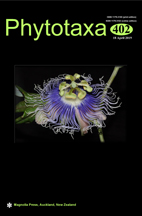Abstract
In the present study, we analyzed the taxonomy and ecology of fourteen species of Luticola registered in oligo- to hypereutrophic reservoirs of southeastern Brazil. Two new species were described using light and scanning electron microscopy. Luticola bartolomeii sp. nov. and Luticola iporangensis sp. nov. are distinguished from morphologically similar species by a combination of valve outline and dimensions. In addition, L. bartolomeii showed occluded isolated areolae that have a different shape and location, hitherto not observed in other Luticola species. We also compared the morphology of the new species with similar taxa and provided information on their ecological preferences. Luticola panamaensis is first recorded in Brazil, and another eight species are recorded for the first time for the state of São Paulo. This study expanded the distribution of species and added new information to the ecology of Luticola, as well as provided the first SEM images for some already known species. Information on the co-occurrence of other diatom species in the samples is also included.

